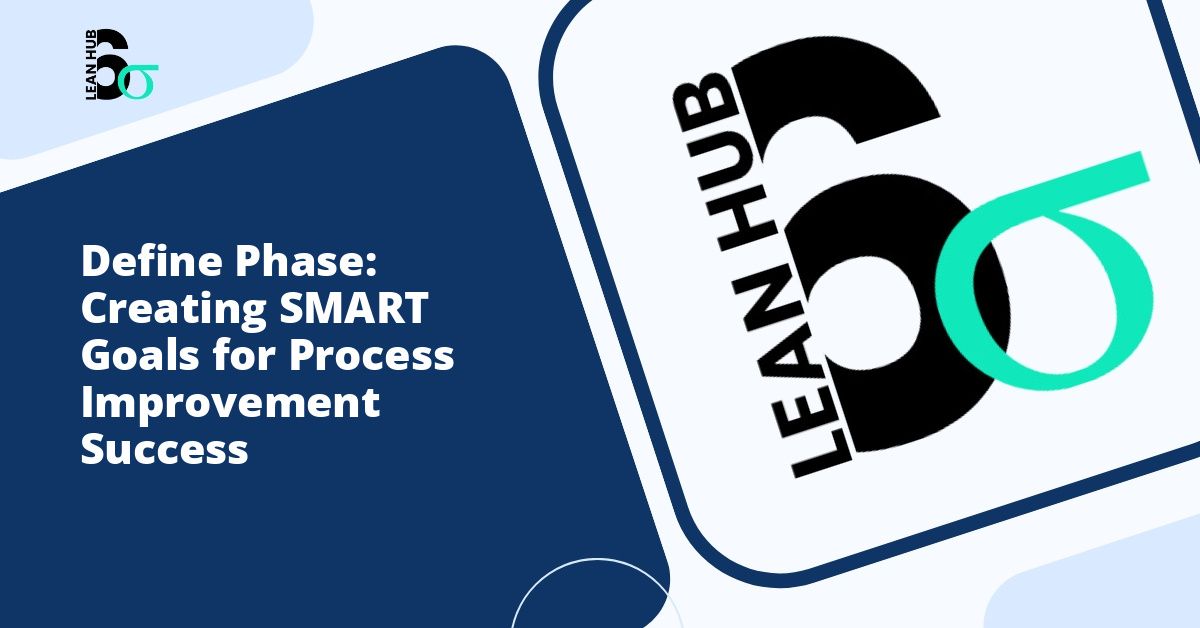In the world of process improvement and quality management, Lean Six Sigma stands as one of the most effective methodologies for driving organizational excellence. The DMAIC framework (Define, Measure, Analyze, Improve, Control) forms the backbone of this approach, and each phase plays a critical role in ensuring project success. Today, we will explore the Define phase in detail, examining the essential deliverables you must complete before advancing to the Measure phase.
Understanding the Define Phase in Lean Six Sigma
The Define phase serves as the foundation for your entire Lean Six Sigma project. This initial stage is where you establish the framework for everything that follows. Think of it as laying the groundwork for a building; without a solid foundation, the entire structure becomes unstable. During this phase, you clarify what problem you are solving, why it matters, and how success will be measured. You might also enjoy reading about Stakeholder Analysis in Six Sigma: A Complete Guide to Identifying and Managing Key Players.
Many organizations make the critical mistake of rushing through the Define phase, eager to jump into data collection and analysis. However, this approach often leads to wasted resources, misaligned objectives, and projects that fail to deliver meaningful results. By thoroughly completing the Define phase deliverables, you set your team up for success and ensure that everyone involved understands the project’s scope and objectives. You might also enjoy reading about How to Get Executive Buy-In for Your Six Sigma Project During Define Phase.
Critical Deliverables for the Define Phase
1. Project Charter Development
The project charter stands as the most fundamental deliverable of the Define phase. This document serves as your project’s constitution, outlining all essential elements and providing a reference point throughout the improvement initiative. A comprehensive project charter should include the following components: You might also enjoy reading about 5 Critical Mistakes Teams Make in the Define Phase and How to Avoid Them.
- Business case explaining why the project matters
- Problem statement that clearly articulates the issue
- Project scope defining boundaries and limitations
- Goal statement specifying measurable objectives
- Timeline with key milestones
- Team members and their roles
- Resources required for project completion
The project charter requires approval from leadership and serves as a contract between the project team and organizational stakeholders. Without this document, projects often drift off course or fail to secure necessary resources.
2. Voice of the Customer (VOC) Analysis
Understanding customer needs and expectations forms a cornerstone of Lean Six Sigma methodology. The Voice of the Customer analysis involves gathering, analyzing, and documenting customer requirements, preferences, and pain points. This deliverable ensures that your improvement efforts align with what truly matters to those who use your product or service.
Methods for collecting VOC data include surveys, interviews, focus groups, observation, and analysis of customer complaints or feedback. The key is to transform qualitative customer feedback into quantifiable requirements that can guide your improvement efforts. This translation process helps you recognize phase-specific needs and priorities that will inform your measurement strategy.
3. SIPOC Diagram
The SIPOC diagram (Suppliers, Inputs, Process, Outputs, Customers) provides a high-level view of your process. This visual tool helps team members understand the process boundaries and identify all relevant stakeholders. Creating a SIPOC diagram involves mapping out:
- Suppliers who provide inputs to the process
- Inputs required for the process to function
- Process steps at a high level (typically 5 to 7 major steps)
- Outputs generated by the process
- Customers who receive the outputs
This deliverable proves particularly valuable when team members come from different departments or have varying levels of familiarity with the process. The SIPOC creates a common understanding and language that facilitates communication throughout the project.
4. Stakeholder Analysis
Every Lean Six Sigma project affects multiple stakeholders, and understanding their positions, concerns, and influence levels is essential for success. A thorough stakeholder analysis identifies all individuals or groups who have an interest in the project and documents their level of support, influence, and potential impact.
This deliverable should include a stakeholder map or matrix that categorizes stakeholders based on their power and interest levels. Additionally, you should develop communication plans tailored to each stakeholder group, ensuring that everyone receives appropriate information at the right time and in the right format.
5. High-Level Process Map
While detailed process mapping occurs during the Measure phase, the Define phase requires a high-level process map that shows the major steps and decision points. This visual representation helps the team understand the process flow and identify areas where problems typically occur.
The high-level process map should be simple enough for anyone to understand quickly but detailed enough to provide meaningful context for the improvement initiative. This balance ensures that stakeholders can grasp the process without becoming overwhelmed by technical details.
6. Problem Statement
A well-crafted problem statement clearly articulates what is wrong, where it is happening, when it occurs, and what impact it has on the organization. The problem statement should be specific, measurable, and free from assumed causes or solutions. This discipline forces teams to focus on the actual problem rather than jumping to conclusions about root causes.
An effective problem statement typically follows this format: “Currently, [process or area] experiences [problem description], which results in [impact on business or customers]. This affects [who is impacted] and has been occurring since [time frame].”
7. Goal Statement
The goal statement complements the problem statement by describing the desired future state. It should include specific, measurable targets and a timeframe for achievement. The goal statement answers the question: “What will success look like when we complete this project?”
Your goal statement should follow SMART criteria (Specific, Measurable, Achievable, Relevant, Time-bound) to ensure clarity and accountability. This deliverable becomes the benchmark against which you will measure project success.
Why These Deliverables Matter
Completing these Define phase deliverables serves multiple critical purposes. First, they create alignment among team members and stakeholders about project objectives and scope. When everyone understands what you are trying to accomplish and why it matters, collaboration becomes more effective and efficient.
Second, these deliverables establish a baseline for project evaluation. Without clear documentation of the starting point, measuring improvement becomes nearly impossible. The Define phase deliverables provide the reference points you need to demonstrate value and justify continued investment in the project.
Third, these documents help you recognize phase completion criteria and determine readiness to advance to the Measure phase. They serve as checkpoints that ensure you have done the necessary groundwork before investing time and resources in data collection and analysis.
Common Pitfalls to Avoid
Several common mistakes can undermine the effectiveness of your Define phase work. One frequent error involves creating deliverables simply to check boxes rather than to add genuine value. Each document should serve a practical purpose and be used throughout the project, not filed away and forgotten.
Another pitfall is insufficient stakeholder engagement during the Define phase. Failing to involve key stakeholders early can lead to resistance later when you need support for implementing changes. Make stakeholder engagement an ongoing activity rather than a one-time event.
Additionally, many teams struggle with scope creep during the Define phase. The temptation to expand project boundaries or tackle multiple problems simultaneously can dilute your efforts and reduce the likelihood of success. Maintain discipline around scope definition and resist the urge to solve every problem at once.
Transitioning to the Measure Phase
Once you have completed all Define phase deliverables and secured stakeholder approval, you can confidently move forward to the Measure phase. This transition should occur through a formal gate review where leadership evaluates the completeness and quality of your Define phase work.
The deliverables from the Define phase will guide your measurement strategy, helping you determine what data to collect, how to collect it, and what constitutes valid measurement. This connection between phases highlights why thorough Define phase work is so essential to overall project success.
Conclusion
The Define phase deliverables establish the foundation for successful Lean Six Sigma projects. By investing time and effort in developing comprehensive project charters, conducting thorough VOC analyses, creating clear process maps, and engaging stakeholders effectively, you position your project for success. These deliverables are not bureaucratic hurdles but rather practical tools that guide your improvement efforts and ensure alignment with organizational objectives.
Remember that the quality of your Define phase work directly impacts the effectiveness of subsequent DMAIC phases. Take the time to complete these deliverables thoroughly, engage stakeholders authentically, and establish clear success criteria. When you recognize phase requirements and complete them with diligence, you create momentum that carries your project through to successful completion and sustainable results.








